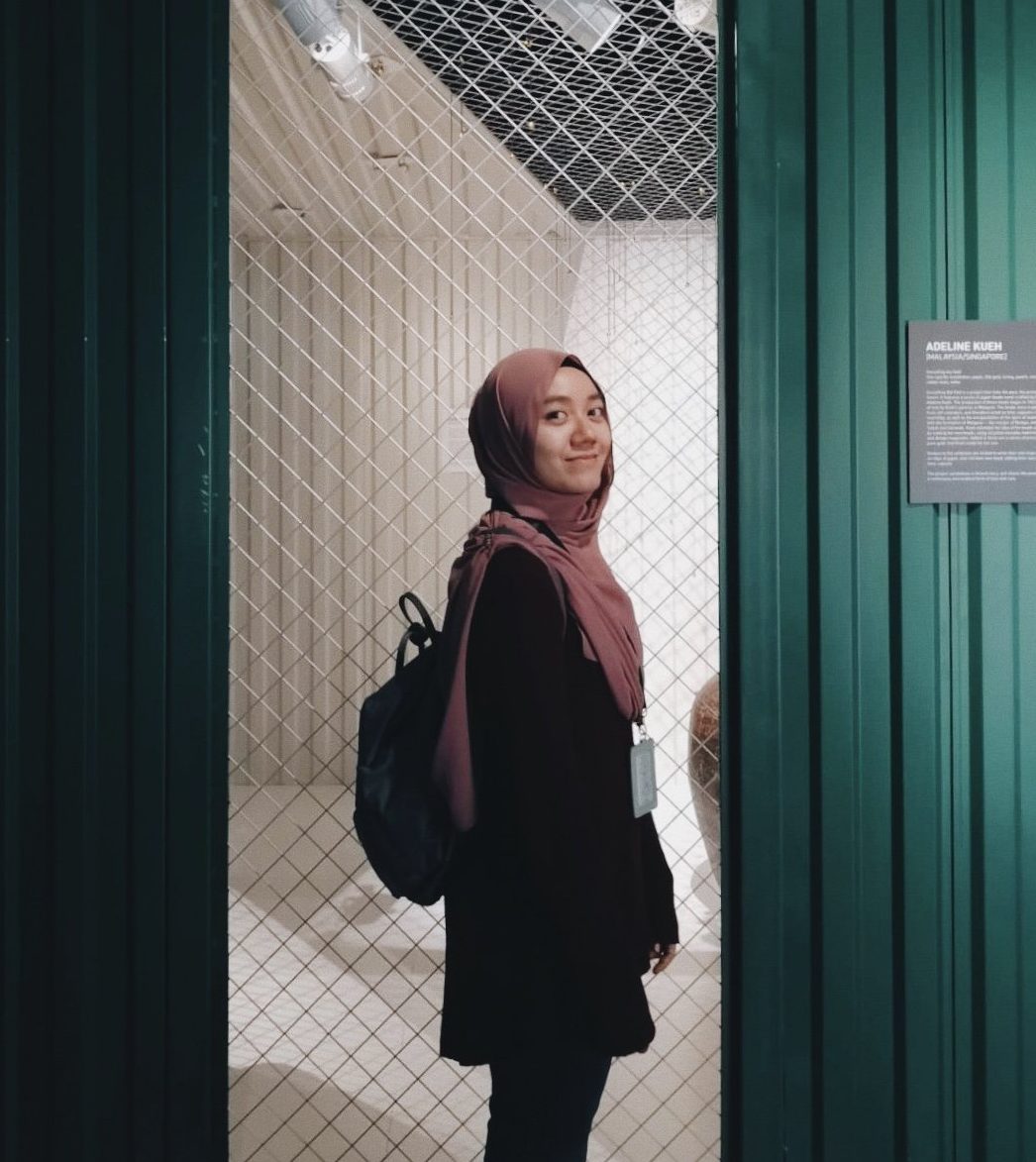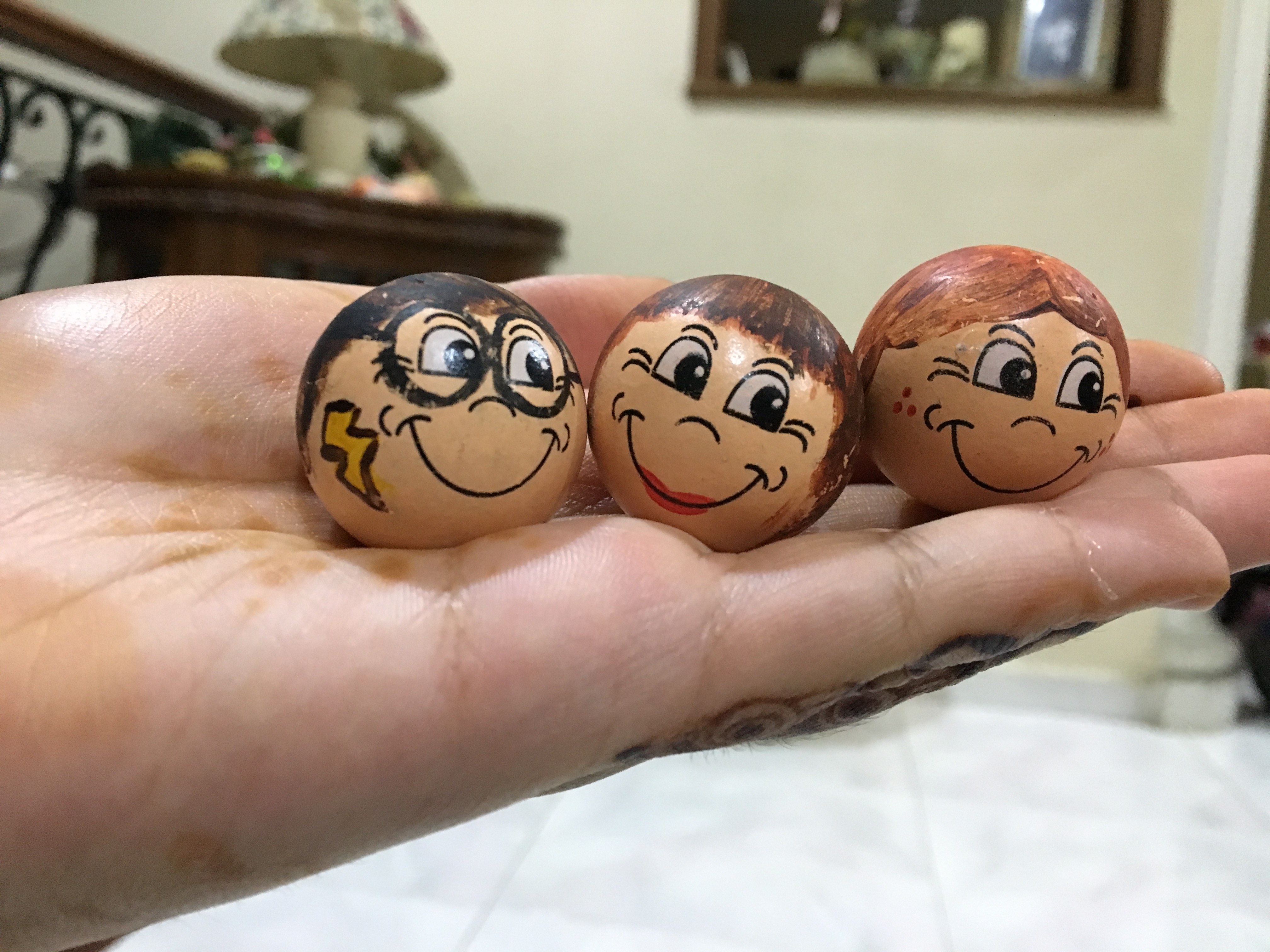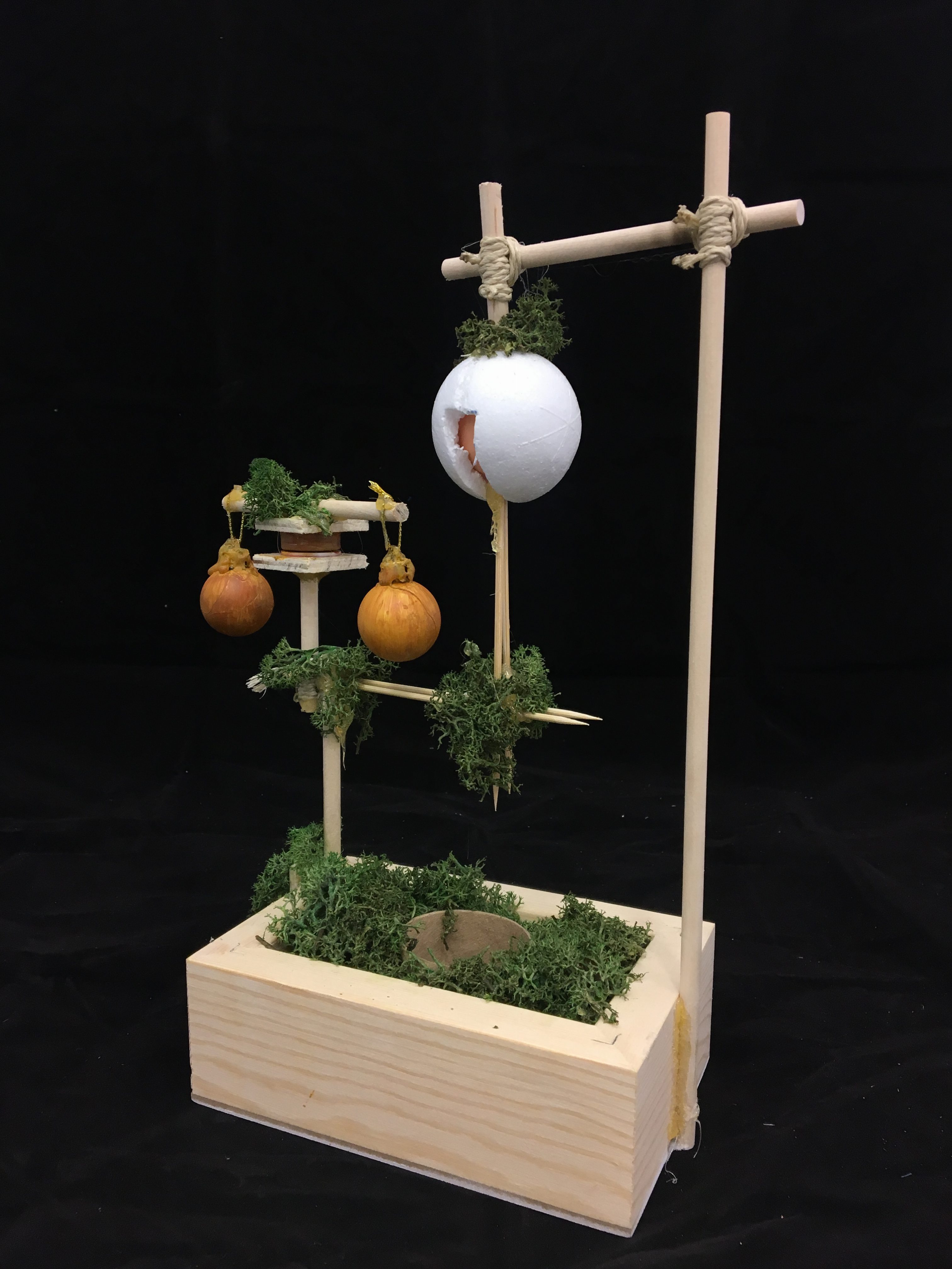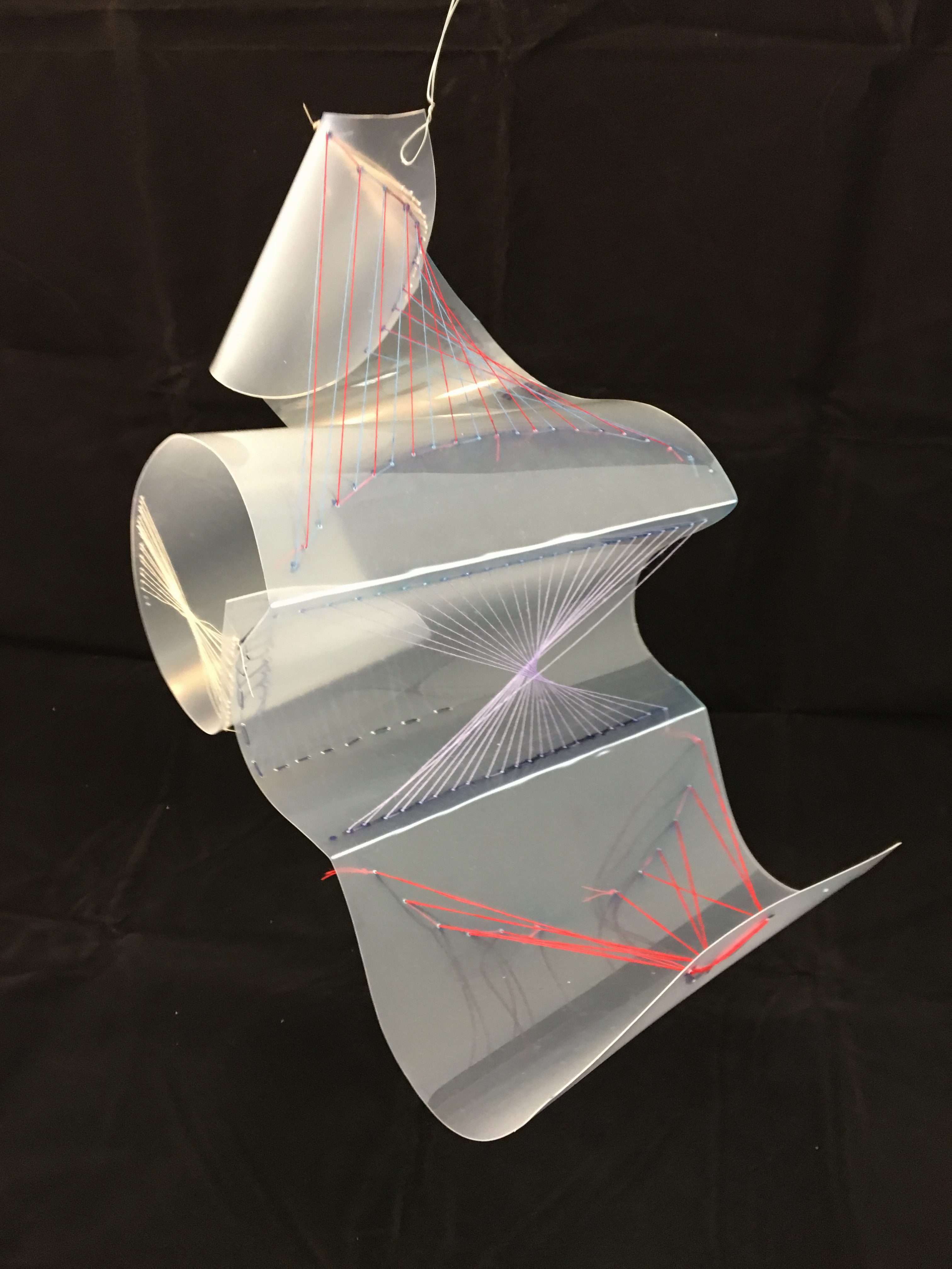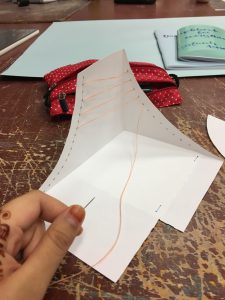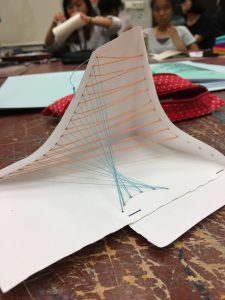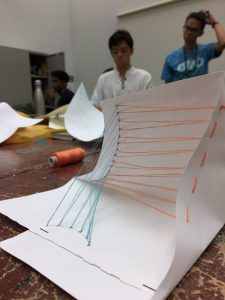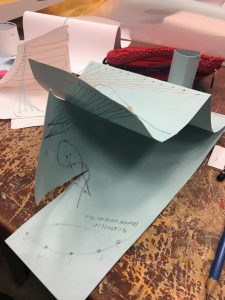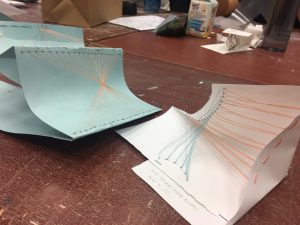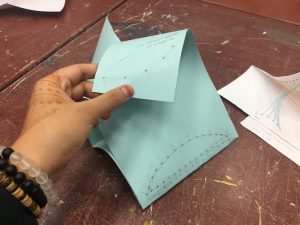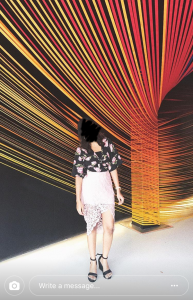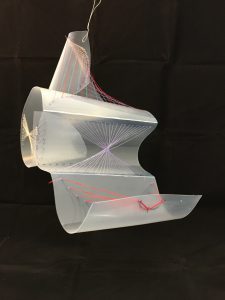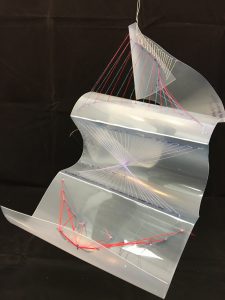For our final project, we were challenged to make a Goldberg Machine. What is it you may ask? It’s the kinetic machine that starts with one object that triggers a chain of action and reaction using different objects.
The scene that I chose for this project was from Harry Potter and Sorcerer’s stone, the scene were the trios (Harry, Ron and Hermione) met for the ever first time on the train towards Hogwarts. Link to the clip can be found below!
Harry Potter and Friends first meeting
We didn’t know what our project was when we first chose our specific scenes. But when Peter told us the project brief, the only words that came to my mind was “die lah”.
My scene was all talk and no actions! How do I put that in a machine that was suppose to show movements, actions and reactions? After having a discussion with Peter, he suggested using sounds instead of sight. He made a point and I proceeded on with that idea and added in parts of mine.
I separated the scene I chose into 2 parts; Harry and Ron’s first meeting and then their meeting with Hermione.
I specifically took 3 different actions from each part to include in my machine.
For the first part, I added in the following scene with the following sound/objects.
First scene:
- Bells: First meeting of Ron and Harry
- Plastic bag: Them eating the entire food cart (sounds of food wrappers)
- Washboard: Sound of the chocolate frog when Harry first opened it from one of the snacks
Second scene:
- Bells: Hermione casting a spell on Harry’s broken glasses
- Glass: The sound of glasses being fixed
- Bells: Them arriving at Hogwarts
I used 3 different balls to represent 3 different characters. I’ve painted the faces of each characters onto the wooden balls. I placed Ron and Hermione on different parts of the machine to represent their meetings during the clip. They knocked into each other and moved on together.
Peter commented that some of the sounds were very subtle like the wrappers/plastic bag. Maybe that was one part I could improve on and also the visual of it. I didn’t think they would want to see my product as I would want them to hear instead of seeing but oh wells.
Below is the video of my final project. It seemed quite rushed but I hope you can see the 3 different characters meeting one another.
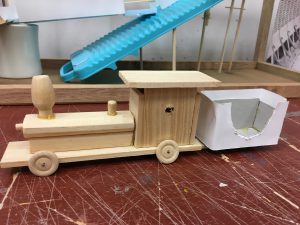
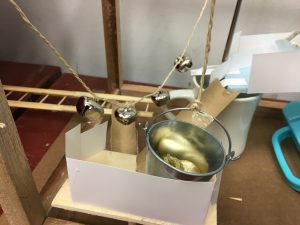
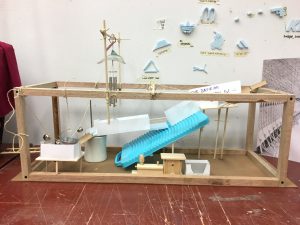
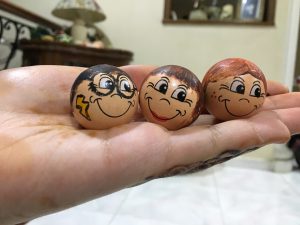
MY GOLDBERG MACHINE 3D FINAL PROJECT
Reflection:
Honestly, this final project challenged us to the very max. It was very stressful as we’re working with both “engineering” and design. It’s like I’m back to DNT during my secondary school days. I really feel I could’ve done better despite the amount of time given. Even Peter was worried when he looked at our progress. If we didn’t have other modules to focus on, I would’ve definitely given my all for this project.
